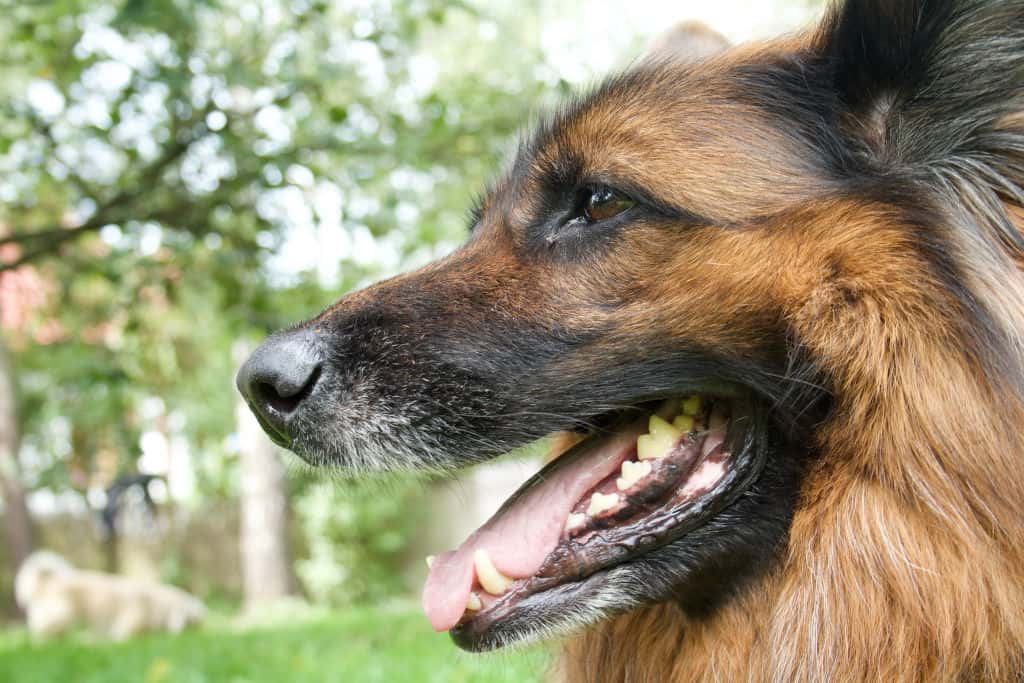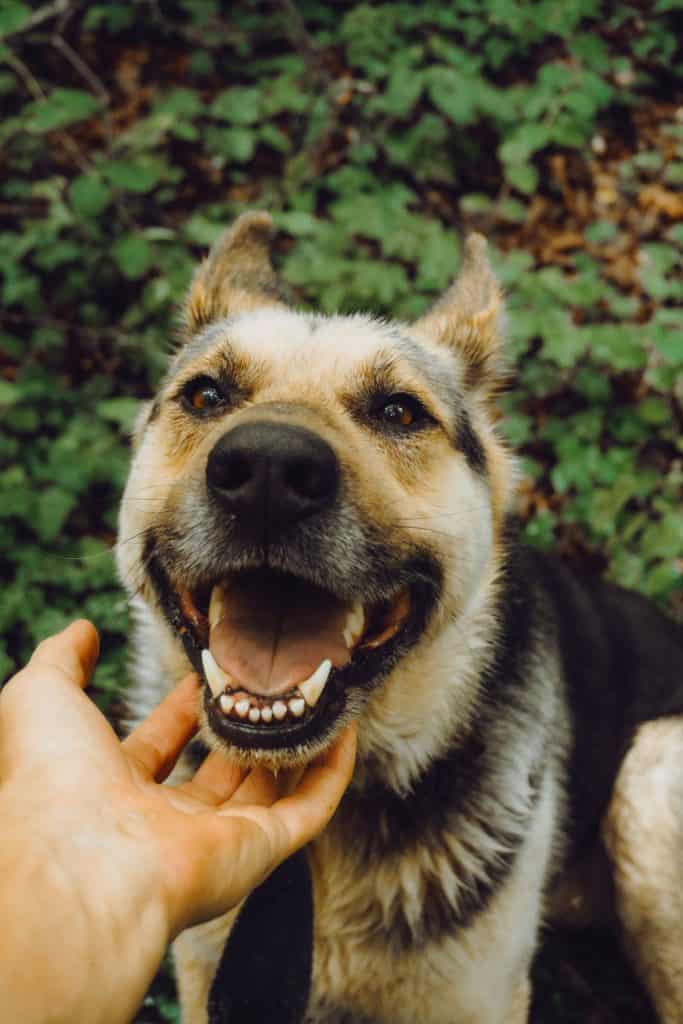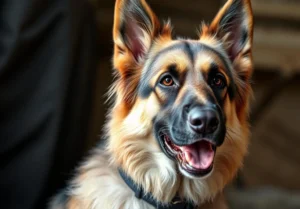Tooth size is proportional to dog size. The larger the dog, the more prominent teeth they have. Some dogs have large teeth considering their size. Which breeds are those?
Pound for pound, Scottish Terriers have the biggest canine teeth. Some breeds with the largest teeth include Airedales, German Shepherds, Belgian Shepherds, and Malinois. Smaller dog breeds like Chihuahuas, Pomeranians even Boxers have much smaller teeth.
Speaking of size, a frequent query centers around which dog boasts the largest teeth. Greyhounds, for instance, are known for their impressively long and sharp chompers that they’ve historically used for hunting.
The canines on the Caucasian Shepherd can grow to be two inches long. A huge Kangal may have canine teeth that are similar (as well as incredibly strong bite force).

Which Dog Breeds Have the Best Teeth?
Genetics heavily influences dental issues in dogs. If you don’t want your dog to have these concerns, you should look for a dog with the best teeth and a minimal chance of dental issues. These are some examples:
- German Shepherd
- Labrador Retriever
- The Siberian Husky
- Doberman Pinscher
- Rottweiler
- Shorthaired German Pointer
- Mountain Dog Bernese
- Newfoundland
- Vizsla
A less commonly known fact is that Alaskan Malamutes often have teeth that remain robust throughout their lives, making them one of the top contenders in the ‘best teeth’ category.
When compared to humans, dogs’ teeth are generally spaced out. Most dogs’ cheek teeth do not touch each other, which is one of the reasons cavities are uncommon in dogs.
How Many Teeth Does a Dog Have?
Dogs, like humans, have baby teeth when they are puppies. They shed their baby teeth and have a complete set of adult teeth by six months due to their rapid development and maturation. In a dog, there will eventually be 42 permanent adult teeth.
Puppies have 28 baby teeth that fall off throughout their first half-year. Because of the structure of canine teeth and the low sugar content of dog food, the 42 that come in and replace them tend to last longer than human teeth. They also have whiter teeth than us.
Do not attempt to extract a loose tooth from your dog’s mouth. There is a risk of damaging the root and infection. Make an appointment with your veterinarian to get these teeth extracted.
Keep in mind that not all dogs develop all 42 teeth. Teeth can get stuck in bone or gum tissue for no apparent reason.

What Is the Biggest Tooth in a Dog?
The upper fourth premolar, or carnassial tooth, is the biggest tooth in a dog’s mouth. Its unique shape and tooth surface are intended to shear, crush, and hold.
These heavy-duty, flat teeth are located in the back of the mouth and are used for grinding and eating. Your dog’s mouth has four molars on top and six on the bottom.
While size matters, sharpness is another aspect altogether. Breeds such as the Doberman Pinscher and the Belgian Malinois, although not having the largest teeth, possess some of the sharpest canine teeth which assist in gripping and tearing meat.
Which Dogs Have Dental Issues?
Some breed lines are genetically inclined to have underdeveloped teeth. This problem is common in brachycephalic breeds but can also occur in mesaticephalic breeds. It can occur in American Cocker Spaniels, for example, and is considered a flaw in a show dog.
Boxers, Great Danes, Mastiffs, Bulldogs, and Collies are the breeds most prone to gingival hyperplasia or gum overgrowth or thickness.
Toy and small-breed dogs are more prone to crowded and crooked teeth. They also have a higher rate of periodontal disease, particularly in the incisors.
Overcrowding is common in brachycephalic (smoosh-faced) dogs because they have the same 42 teeth as other breeds but less room. There are many other examples, and it can help if you familiarize yourself with these to prevent dental problems for your dog.
Sharpest doesn’t always mean healthiest. Breeds like the Border Collie, revered for their keen intelligence, often surprise owners with the sharpness of their teeth. However, it’s paramount to routinely check for dental wear and potential issues, even in these sharp-toothed breeds.
While breeds like the Golden Retriever or the Beagle might not make headlines for the largest or sharpest teeth, their dental health tends to be exemplary with proper care. Their balanced oral structure makes dental hygiene routines straightforward and effective.
To keep your dog’s teeth healthy and their breath fresh, brushing is the answer. If you’re not already brushing your dog’s teeth, know that it is a well-recommended approach to keeping your dog’s teeth healthy.
Suggested read: Selecting & Using Dog Toothbrush
FAQs
Which dog breed has the strongest bite force?
The Kangal dog has the strongest bite force of any dog, measuring 743 PSI, which is greater than the lion’s bite force of 650 PSI. They are also a large breed of dog. Consider a lion-sized Irish Wolfhound. Intimidating at first sight, but gentle dog breed if appropriately trained.
Can a dog have two sets of rows of teeth?
You’re witnessing infant teeth that need to come out and be replaced. The veterinarian should extract the teeth. Leaving them for an extended time can raise the risk of cavities and unpleasant oral diseases.
Do wolves have bigger teeth than dogs?
Wolves have longer, thicker canine teeth than most dogs and larger, more developed molars. Both wolves and dogs have the same amount of teeth, but the wolf’s teeth, as well as its skull and jaw, are larger and more robust.
What animals have large canine teeth?
Canines are frequently the most prominent teeth in many species’ mouths. Male pigs, boars, musk deer, seals, walruses, and ape species, including the baboon and gorilla, have larger canines. They use these larger canines to frighten competitors and predators.
Alex, a passionate animal lover, has experience in training and understanding animal behavior. As a proud pet parent to two dogs and three cats, he founded AnimalReport.net to share insights from animal experts and expand his knowledge of the animal kingdom.




